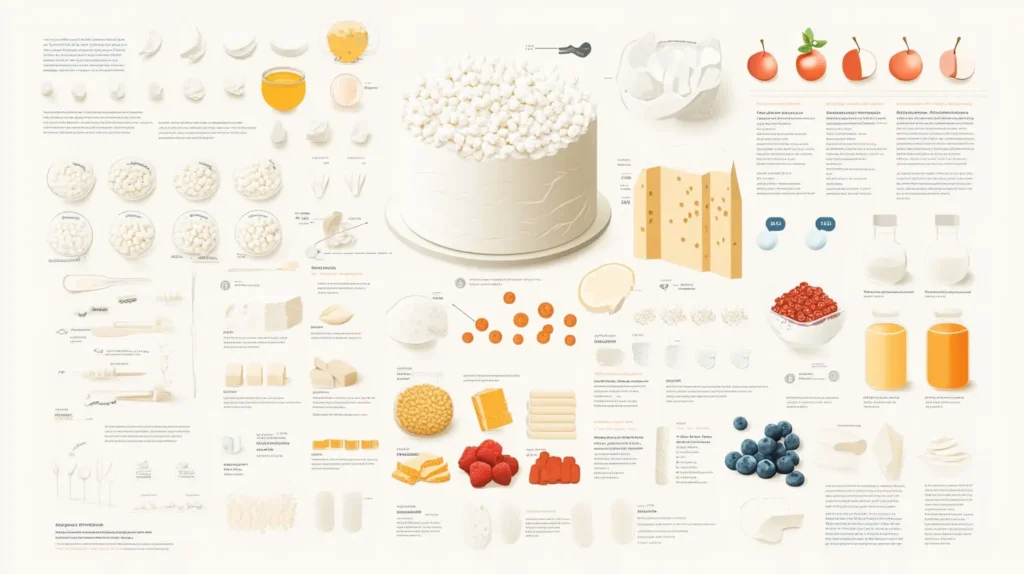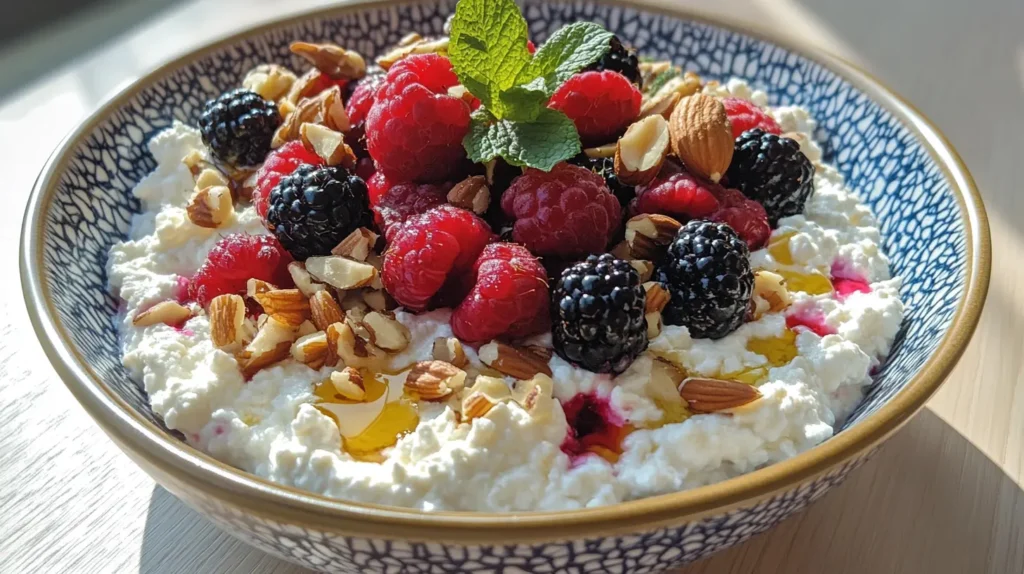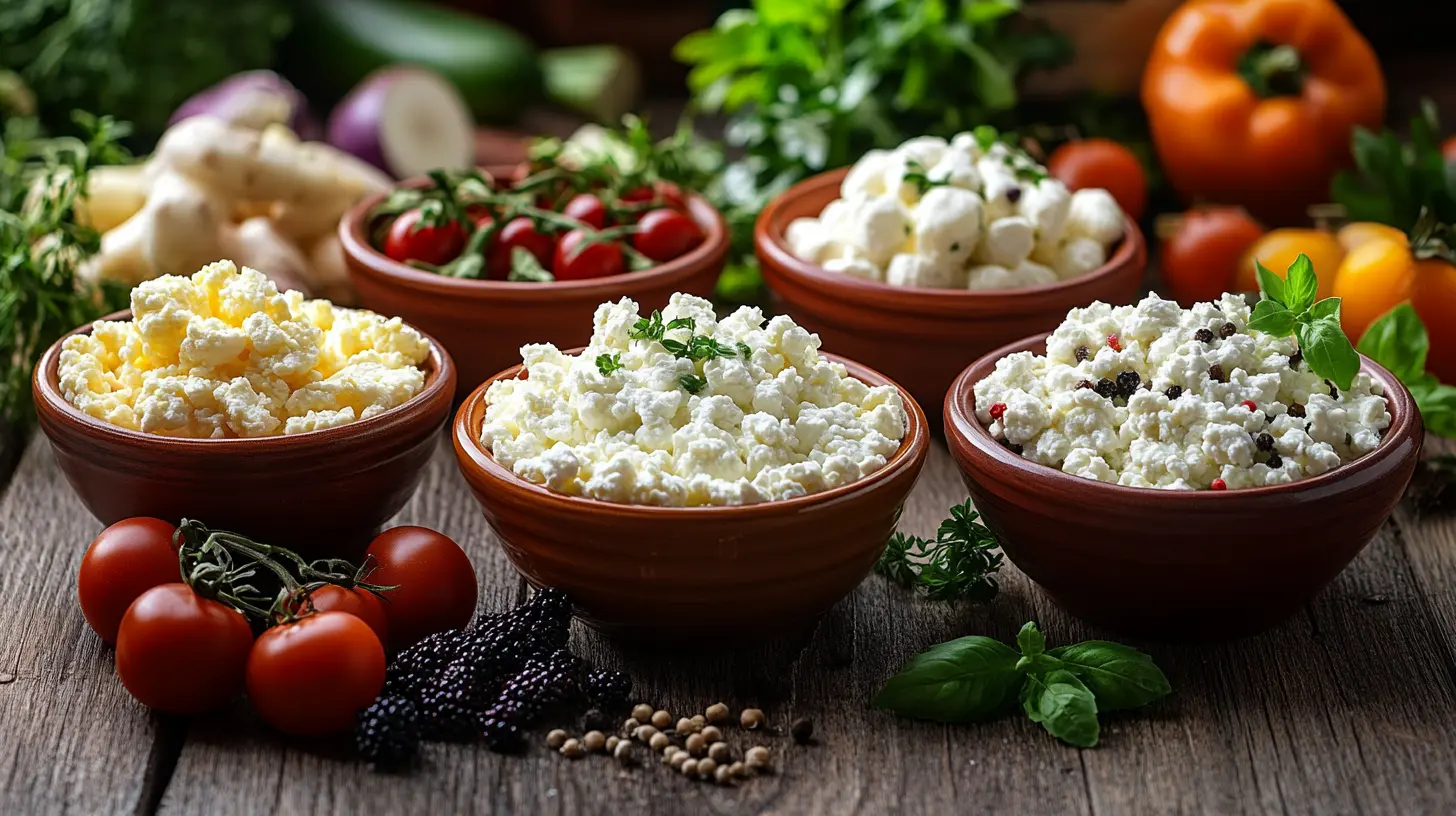Organic Cottage Cheese, and Grass-Fed Cottage Cheese: A Complete Guide
Introduction
Cottage cheese is a top choice for anyone who values healthy and versatile foods. With its creamy texture and mild flavor, it easily enhances meals, snacks, and recipes. However, not all cottage cheeses are the same. Options like whole cottage cheese, organic cottage cheese, and grass-fed cottage cheese each offer unique advantages.
This guide takes you through the world of cottage cheese, highlighting popular varieties such as whole milk cottage cheese, organic grass-fed cottage cheese, and trusted brands like Good Culture Whole Milk Cottage Cheese. We’ll explore its nutritional benefits, share tips for choosing the best type, and answer frequently asked questions about this adaptable dairy favorite.
Whether you’re a fan of natural cottage cheese or curious about the benefits of full fat cottage cheese, you’re in the right place. Let’s get started!
Table of contents
What is Cottage Cheese?
Cottage cheese is a fresh dairy product made by curdling milk and removing the whey. Unlike aged cheeses, it has a soft texture, mild flavor, and a hint of tanginess, making it ideal for both sweet and savory dishes. Loved around the globe, it has gained popularity, especially among health-conscious individuals.
The Basics of Natural Cottage Cheese
Natural cottage cheese is crafted with just a few basic ingredients: milk, cultures, and salt. Without artificial additives or preservatives, it offers a pure and wholesome flavor. Its clean labels and minimal processing make it a popular choice for those seeking a healthier, more natural option.
Whole Cottage Cheese vs. Low-Fat Options
A major difference in cottage cheese varieties lies in their fat content. Whole cottage cheese, made with whole milk, has a creamier texture and richer flavor than low-fat or non-fat options. While low-fat versions may attract those watching their calorie intake, whole cottage cheese is often preferred for its fuller taste and more satisfying texture.
Nutritional Value of Cottage Cheese

Cottage cheese is a nutritional powerhouse, offering an impressive blend of protein, healthy fats, vitamins, and minerals. Whether you’re opting for whole milk cottage cheese, full fat cottage cheese, or organic grass-fed cottage cheese, this dairy favorite provides several key benefits for your overall health.
Whole Milk Cottage Cheese Nutrition
Whole milk cottage cheese is made using full-fat milk, which provides a rich, creamy texture and an excellent nutritional profile. Here’s a quick breakdown of its key components:
- Protein: Cottage cheese is a high-protein food, with approximately 12–14 grams of protein per half-cup serving. Protein is essential for muscle repair, growth, and overall energy.
- Healthy Fats: In whole milk cottage cheese, you’ll find healthy fats that support brain function and help keep you feeling full longer. These fats are naturally occurring, unlike the additives in some processed low-fat products.
- Calcium: One serving provides about 10–15% of your daily calcium needs, promoting strong bones and teeth.
- Vitamins and Minerals: Cottage cheese is a good source of B vitamins, phosphorus, and selenium, which support energy metabolism, bone health, and immune function.
Benefits of Full Fat Cottage Cheese
For those who enjoy the richness of full-fat dairy, full fat cottage cheese is an excellent option. Here’s why it might be the better choice for some:
- Satiety: The fat content in full-fat cottage cheese helps you feel full and satisfied after eating, making it an ideal snack or meal addition.
- Flavor: The creamy taste of full-fat varieties is unmatched, making them a favorite for recipes and standalone enjoyment.
- Nutrient Absorption: Fats aid in the absorption of fat-soluble vitamins (A, D, E, and K), so enjoying full-fat cottage cheese can enhance your overall nutrient intake.
Comparing Whole Milk Cottage Cheese to Low-Fat Options
Low-fat cottage cheese may have fewer calories, but it often includes stabilizers or thickeners to make up for the reduced fat content. On the other hand, whole milk cottage cheese is naturally creamy and undergoes less processing. If your diet permits moderate fat consumption, whole milk varieties can provide superior flavor, texture, and health benefits without relying on added ingredients.
Types of Cottage Cheese You Should Know

When it comes to cottage cheese, the variety available can feel overwhelming. However, understanding the types—such as whole cottage cheese, organic cottage cheese, and grass-fed cottage cheese—can help you choose the one that best suits your preferences and dietary goals.
Whole Cottage Cheese
Whole cottage cheese is made with full-fat milk, resulting in a rich, creamy texture and a mild, slightly tangy flavor. It’s ideal for those who appreciate a more indulgent consistency while enjoying the benefits of its natural fats and proteins. Highly versatile, whole cottage cheese works beautifully in both sweet and savory dishes or as a satisfying standalone snack.
- Why Choose Whole Cottage Cheese?
Whole cottage cheese is ideal if you’re seeking a nutrient-dense, satisfying food that can provide long-lasting energy. Its creamy texture pairs well with fruits, nuts, or even a drizzle of honey for a simple yet wholesome snack.
Organic Cottage Cheese
For those looking for a cleaner and more sustainable option, organic cottage cheese is an excellent choice. Organic versions are produced without synthetic pesticides, hormones, or antibiotics, making them a healthier option for you and the environment.
- Benefits of Organic Cottage Cheese:
- Fewer Additives: Organic products focus on minimal processing and high-quality ingredients.
- Better for the Environment: Choosing organic supports environmentally friendly farming practices.
- Healthier Cows: Organic dairy often comes from cows raised on organic feed without harmful chemicals.
- Pairing Ideas: Organic cottage cheese pairs beautifully with fresh vegetables like cucumbers, tomatoes, and herbs for a refreshing, nutrient-packed snack.
Grass-Fed Cottage Cheese
Grass-fed cottage cheese is made from the milk of cows that graze primarily on pasture, which enhances the nutritional value of the product. It’s higher in omega-3 fatty acids and conjugated linoleic acid (CLA), both of which support heart health and reduce inflammation.
- Why Grass-Fed is Better:
Grass-fed options, including organic grass-fed cottage cheese, are a premium choice for those who prioritize high-quality dairy. The milk used to produce grass-fed cottage cheese often contains more nutrients and a richer flavor profile. - Top Grass-Fed Cottage Cheese Brands: Look for options from trusted producers. Many grass-fed cottage cheese brands are certified organic, ensuring you get a high-quality product every time.
Popular Cottage Cheese Brands

Choosing the right brand can make all the difference when it comes to taste, texture, and quality. Brands like Good Culture Whole Milk Cottage Cheese and a variety of grass-fed cottage cheese brands have set themselves apart with their commitment to premium ingredients and exceptional flavor.
Good Culture Whole Milk Cottage Cheese
Good Culture Whole Milk Cottage Cheese is a standout choice for many health-conscious individuals. Known for its clean ingredients and creamy texture, it’s crafted with pasture-raised milk and live, active cultures for optimal freshness and nutrition.
- Why People Love It:
- Clean Ingredients: Good Culture prides itself on using simple, real ingredients with no artificial additives or preservatives.
- High in Protein: Each serving packs 19 grams of protein, making it perfect for muscle recovery and sustained energy.
- Delicious Taste: Its rich and creamy flavor works well on its own or as a base for various recipes.
- How to Enjoy: Pair Good Culture’s whole milk cottage cheese with fresh berries for breakfast, or use it as a creamy topping for avocado toast.
Top Grass-Fed Cottage Cheese Brands
Grass-fed cottage cheese has gained popularity for its superior nutritional profile and ethical farming practices. Several brands now offer high-quality options that prioritize sustainability and taste.
- Key Features of Grass-Fed Brands:
- Nutrient-Dense Milk: Grass-fed cows produce milk richer in omega-3 fatty acids and CLA, enhancing the nutritional value of the cheese.
- Sustainability: Many grass-fed brands emphasize eco-friendly and humane practices.
- Flavor: The milk from grass-fed cows has a distinct, richer taste, making the cheese more flavorful.
- Recommended Grass-Fed Brands:
Look for labels like “grass-fed” and “organic” to ensure you’re getting the best quality. Many brands also feature third-party certifications, guaranteeing ethical and clean production processes.
Organic Grass-Fed Cottage Cheese Options
For the best of both worlds, organic grass-fed cottage cheese combines the purity of organic farming with the enhanced nutrition of grass-fed milk. These options are perfect for those who value both their health and the environment.
Incorporating Cottage Cheese into Your Diet

Cottage cheese is one of the most versatile foods you can include in your diet. From sweet breakfasts to savory snacks and even hearty meals, options like whole milk cottage cheese, organic cottage cheese, and natural cottage cheese fit seamlessly into various dietary preferences and meal plans.
Simple Ways to Enjoy Cottage Cheese
Here are some delicious and easy ways to incorporate cottage cheese into your daily routine:
- Quick Breakfast Bowls:
Start your day with a nutritious bowl of whole cottage cheese topped with fresh fruits like blueberries, strawberries, or sliced bananas. Sprinkle with granola or nuts for added crunch and flavor. - Savory Snacks:
Use organic grass-fed cottage cheese as a dip for fresh veggies like carrots, cucumbers, and cherry tomatoes. You can also add a pinch of salt, pepper, and your favorite herbs for an extra flavor boost. - Smoothie Enhancer:
Blend natural cottage cheese into your morning smoothie for a creamy texture and a protein-packed punch. Pair it with frozen berries, spinach, and almond milk for a delicious and nutritious drink. - Stuffed Avocados:
Scoop full fat cottage cheese into halved avocados, drizzle with olive oil, and sprinkle with paprika or chili flakes for a satisfying snack or light lunch.
Cottage Cheese in Recipes
Whole cottage cheese isn’t just for snacking—it can transform meals into protein-rich creations.
- Lasagna with Cottage Cheese:
Substitute ricotta with whole milk cottage cheese for a lighter but equally creamy lasagna filling. Its mild flavor complements tomato sauce and herbs perfectly. - Cottage Cheese Pancakes:
Blend organic cottage cheese into your pancake batter for fluffy, protein-packed pancakes. Add a dollop on top for an extra touch of creaminess. - Baked Goods:
Use natural cottage cheese in muffins or breads to boost moisture and nutrition. It’s a great way to add protein without altering the flavor significantly.
Cottage Cheese for Healthy Diet Plans
Whether you’re following a specific eating plan or just looking to improve your diet, cottage cheese fits the bill:
- Keto and Low-Carb Diets: The high protein and low carbohydrate content of whole milk cottage cheese make it a keto-friendly option. Pair it with avocado or nuts for a satisfying snack.
- High-Protein Diets: With brands like Good Culture Whole Milk Cottage Cheese offering up to 19 grams of protein per serving, it’s perfect for muscle building and post-workout recovery.
- Weight Management: The creamy texture and high satiety factor of full fat cottage cheese help control hunger, making it a great choice for portion-controlled meals.
FAQs
Cottage cheese often raises questions for those exploring its nutritional benefits and varieties. Here are some frequently asked questions about whole cottage cheese, organic cottage cheese, and grass-fed cottage cheese, along with clear, informative answers.
Is Whole Cottage Cheese Better Than Low-Fat Options?
Yes, whole cottage cheese can be a better choice depending on your nutritional needs. Whole versions retain their natural fats, which provide more flavor, creaminess, and a feeling of fullness. Additionally, the healthy fats in whole cottage cheese can help with the absorption of fat-soluble vitamins like A, D, E, and K.
On the other hand, low-fat cottage cheese may appeal to those looking to reduce calorie intake. However, it often contains added stabilizers or thickeners to improve texture, making whole milk cottage cheese a more natural option.
What Makes Organic Cottage Cheese Special?
Organic cottage cheese is produced without synthetic pesticides, hormones, or antibiotics, making it a cleaner and healthier option. It also supports environmentally friendly farming practices. For those who value high-quality dairy, organic grass-fed cottage cheese is an even better choice, as it combines organic standards with the nutritional benefits of grass-fed milk.
Why Should You Choose Grass-Fed Cottage Cheese?
Grass-fed cottage cheese stands out for its superior nutritional profile and ethical production practices. Cows fed primarily on grass produce milk richer in omega-3 fatty acids and conjugated linoleic acid (CLA), which support heart health and reduce inflammation. Additionally, grass-fed dairy is often associated with better animal welfare and more sustainable farming methods.
How Does Good Culture Whole Milk Cottage Cheese Compare to Other Brands?
Good Culture Whole Milk Cottage Cheese is a top choice for many due to its clean ingredients, exceptional flavor, and high protein content. Unlike some brands, it avoids added sugars and artificial preservatives, ensuring a pure, wholesome product. Its commitment to using pasture-raised milk further enhances its nutritional value, making it a standout among cottage cheese options.
Can Lactose-Intolerant People Eat Cottage Cheese?
Cottage cheese contains less lactose than many other dairy products, making it easier to digest for some people with mild lactose intolerance. For those highly sensitive, lactose-free cottage cheese options are available, or they can opt for alternatives like Greek yogurt.
Conclusion
Whole cottage cheese is more than just a side dish; it’s a nutritional powerhouse and a culinary gem. Whether you’re looking for ideas to integrate it into quick dinner recipes, exploring its use in gluten-free high-protein meals, or pairing it with a slice of gluten-free banana bread, cottage cheese adds versatility and nutrition to your meals. Get creative and let this wholesome ingredient transform your cooking!

